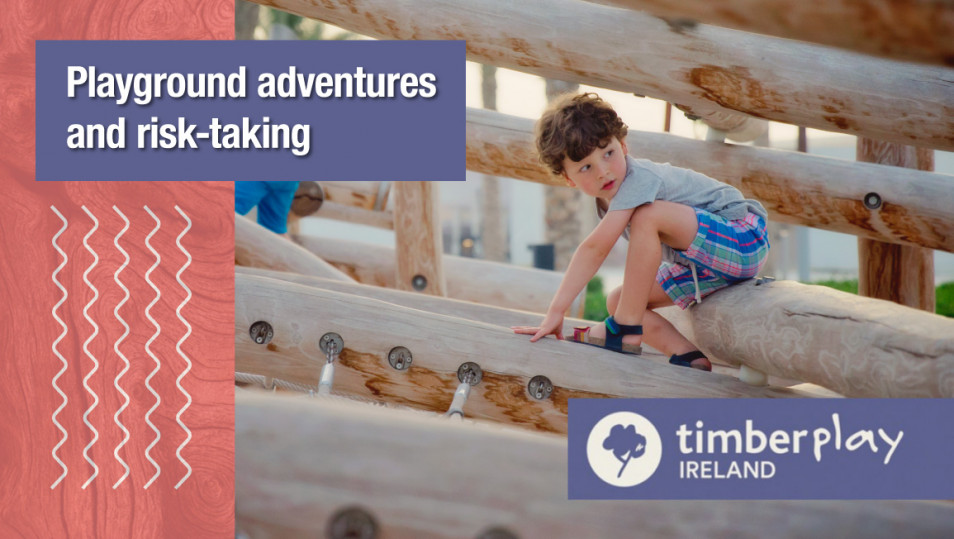Today In Play
Adventure play is a child-led activity that evokes feelings of excitement, thrill, and challenge. Studies indicate that when children are allowed to engage in healthy risk-taking activities, they learn vital life skills and abilities.
If we limit their exposure to adventurous play, telling them to be careful and slow down, we restrict their active growth, causing children to become more sedentary, leading to far greater health risks than skinned knees.
Adventurous, risky play generally falls into six main categories, but how can each of these be integrated into playgrounds to create spaces that push growing bodies and minds in ways that inspire their imagination?
1. Climbing
Children who climb can gain fitness, problem-solving skills, and self-esteem as they push themselves out of their comfort zones taking on new challenges. Trees, hills, logs, and climbing frames help children learn the basics of climbing that will lead them to greater success later when tackling tricker objects. Even older children love to climb, and playground designs that use natural materials can enhance this experience for everyone.
2. Experiencing Speed
Slides, zip-lines, rope swings, and traditional swings are all great tools for incorporating speed and excitement in a fun way. As well as helping children develop balance and coordination, swings and slides promote social interaction. They participate in these activities together, watching others and then having a go themselves when it goes well. Ensuring that playgrounds comply with British and European safety standards in playground design means that speed can be experienced safely.
3. Allow them to Use Tools
In the past, tools were a normal part of a child’s education and development, but now they are hardly used, perhaps due to technology or perceived risks. Even so, kids tend to love using tools whenever they get a chance, and while there is always a risk, it also encourages children to concentrate and be more aware of their personal safety. Giving children the chance to experience real tools such as hammers, saws and spades can enhance their physical skills and boost their self-esteem and self-confidence.
4. Playing with the Elements
Children can also have fun playing with natural elements in play areas and playgrounds. Incorporating water features in playgrounds offers them the opportunity to improve skills such as coordination, motor skills and fitness. Playing with water can help kids learn about physics too. Splashing, pouring, and carrying water are all great ways for children to get some exercise.
5. Rough and Tumble
Children’s rough and tumble games like chasing, play fighting and wrestling are some of the most basic ways for them to develop many important skills. By providing an environment that facilitates this type of play, children learn about their abilities, boundaries, self-control and compassion.
6. Disappearing Games
As far as disappearing activities go, hide and seek is among the most popular. Hide and seek helps children to use their imaginations to hide and find their targets while improving problem-solving and conflict-management skills.
Children learn from their mistakes and they rarely repeat them. The ability to take risks is essential for a child’s well-being, because it allows them to gain valuable insight about themselves and gain a true understanding of the world that can only be acquired through experience. A well-designed playground that incorporates the natural elements will allow children to experience adventure play in a controlled and safe way.
Children who are more confident about taking chances in life are more likely to rebound well if things don’t always work out the first time. When allowed to participate freely in adventurous play in a playground that promotes all sorts of different elements of risk-taking, children soon learn to assess and manage risk.
It is a balancing act to create a space where children will be safe, while offering a sufficient challenge to engage their sense of wonder and adventure. To that point, Julian Richter Sr summarised it best,
“As much risk as possible, as little safety as necessary.”
To learn more about how Timberplay Ireland can help create your perfect play space, contact us today.

